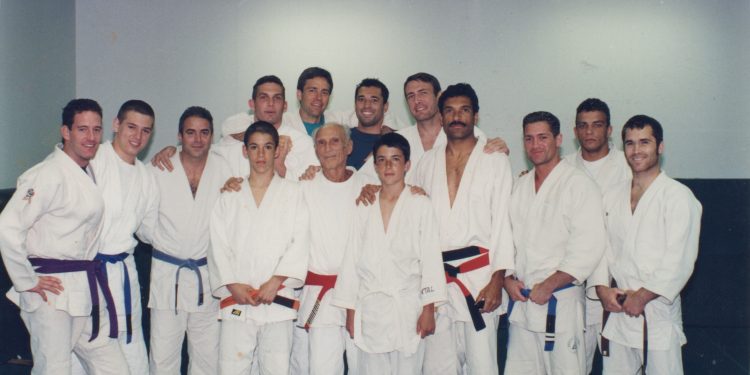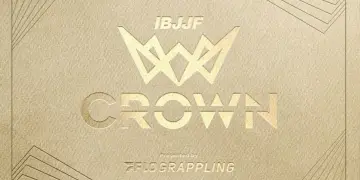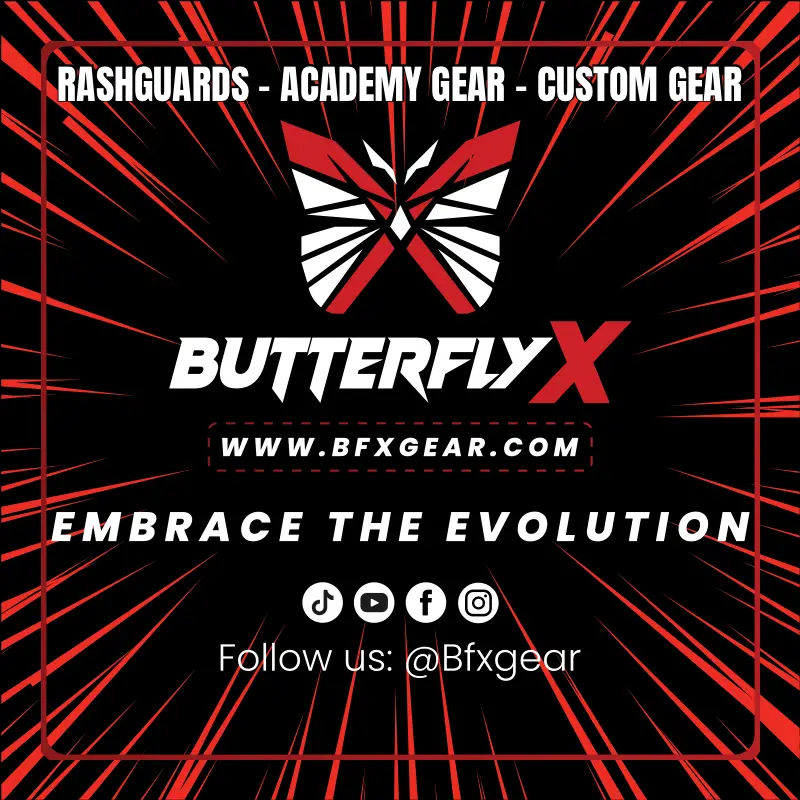If you’re a martial artist or a sports fan, unless you’ve been living under a rock for the last thirty years you’ve probably heard the last name ‘Gracie’; You may even know something of the family’s story: how they learned Jiu-Jitsu from a Japanese practitioner living in Brazil; how clan patriarch Hélio Gracie adapted the art to suit his slight frame, and so developed a signature style of grappling that proved devastatingly effective against all challengers; how Hélio’s eldest son Rorion Gracie introduced his family’s art to the world in iconic fashion in 1993 with the first Ultimate Fighting Championship, an eight-man, no-holds-barred tournament pitting martial arts style against martial arts style and proving—with his brother Royce‘s victory—that their family’s style was the best. You may even know that today Gracie Jiu-Jitsu is the fastest-growing martial art on the planet, boasting nearly three million practitioners worldwide. What you may not know is that, in a lot of ways, the art’s ascendancy into mainstream American superstardom hinged on one simple thing: a waterbed.
I’m set to meet Richard Bresler—Rorion Gracie’s first regular student in L.A. and the man widely recognized as the first American student of BJJ—at the 360 Self Defense Academy, a small martial arts studio in Westchester, just north of the Los Angeles International Airport. We’re here to do a private lesson in Gracie Jiu-Jitsu and to discuss the prospect of working together on Richard’s memoir, the as-yet unwritten story of his over 40 years’ involvement with the Gracie family and the art that bears their name. It’s a 40-year journey that traverses some of the biggest events in modern martial arts, including the famous 1988 Las Vegas seminar at which Chuck Norris introduced Rorion, Rickson, Royler, Royce, Renzo, and other members of the clan to his international black belt association, as well as the creation and inauguration of the now ubiquitous UFC. It’s a story I can’t wait to hear, but I’m going to have to: Richard is running late.
I park myself on a nearby bench and run through my notes, which at this point are sketchy at best. I know that Richard Bresler was Rorion’s roommate in Hermosa Beach, back before Gracie Jiu-Jitsu had even begun to make a name for itself on American soil. I know that he put up the money that allowed Rorion to open the Gracie Academy, a fact that arguably makes him one of the most important figures in the story of BJJ in America. I know he also invested money in the first UFC, a fact that ought to make moot any further debate about the previous designation. I know that he was one of the first people outside the family to be certified to teach Gracie Jiu-Jitsu through the original instructor certification program, and that he was one of the head instructors at the Gracie Academy during a crucial phase in that institution’s rise. Simply put, this guy is Jiu-Jitsu royalty, a fact echoed by Rorion himself in one of the (few) videos featuring Richard Bresler that I’d found on YouTube: “Richard,” Rorion says, “is definitely one of the pillars of Jiu-Jitsu in America.” The question I keep coming back to is one I’m shocked I even to have to ask: given all of this, why don’t more people know about this guy? Where’s his BJJ Heroes profile? Where’s his association, his team of affiliate schools, his droves of loyal students? And—great as I’m sure the owner, facility, and students are here—why is he teaching a handful of white and blue belts at a Krav Maga school in Westchester?
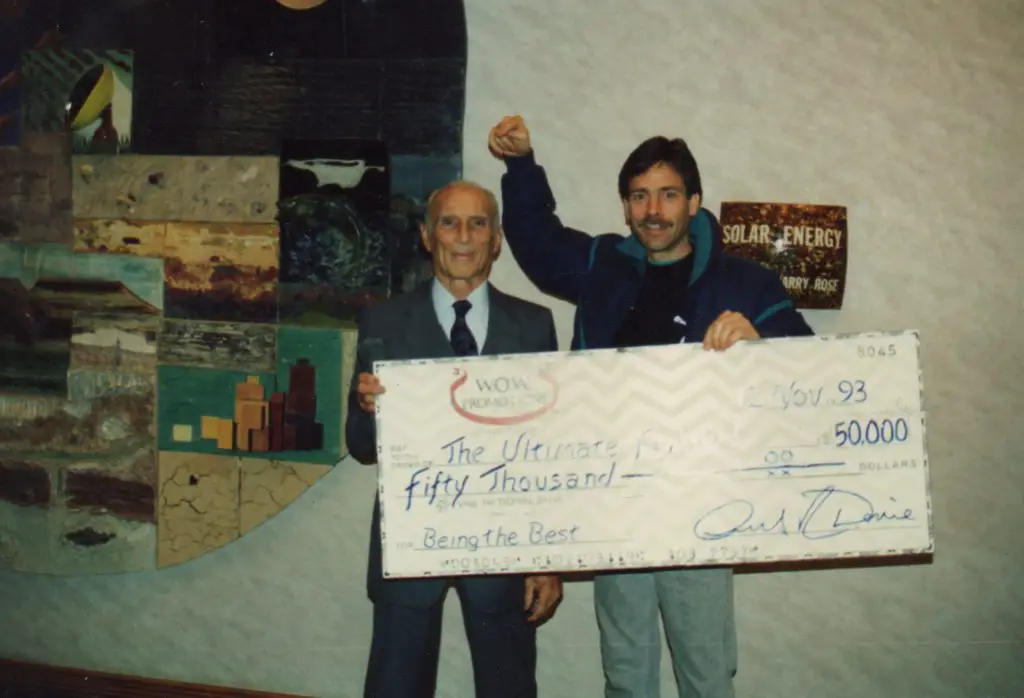
Ten minutes later I spot Richard Bresler coming across the street. If I didn’t know him already from pictures I’d found online, the gi and belt tucked under his arm are a dead giveaway. He’s tall and slender, with a boyish ease—and head full of dark hair—that belie his nearly 70 years. He spots me and waves, then hops up on the sidewalk and trots over. “Traffic,” he says with a grin and a shrug, and there’s a world of meaning in the word. I get it. Even growing up in small-town Ohio I’d heard horror stories about L.A. traffic, and my time here has shown me that they weren’t far off. I’ll miss the sunshine and beaches when I head back to the snow… but I won’t miss sitting in a bumper-to-bumper standstill on the 405.
“No problem,” I say, doing my best to hide my nervousness. Richard and I have exchanged a number of emails at this point, having first connected on social media, but this is our first time meeting face-to-face, and—if I’m being totally honest—I’m a little starstruck. It doesn’t last long, though, because Richard doesn’t let it. His calm and agreeable demeanor put me almost instantly at ease, and within five minutes it feels like we’re just two guys who both do Jiu-Jitsu. It’s a gracious move on his part, and it’s no accident: he tells me later that this is a direct result of how he was raised on the mats.
“Rorion was always very friendly,” he tells me. “He told me, ‘We don’t demand respect from our students, we show them respect and they respect us in turn.’ I always liked that attitude, and it’s something I’ve always tried to practice with my students.”
At this point in my life I’ve been around the martial arts for nearly twenty years, and I’ve met plenty of so-called masters who demand respect whether they deserve it or not. By contrast, Richard Bresler is one of the highest-ranking American practitioners of Gracie Jiu-Jitsu—a 6th-degree black belt—and you’d never know it from talking to him. I don’t mean that he couldn’t handle himself in a fight—he certainly could. I mean that he carries it all so lightly. Plenty of guys with 6 degrees on a BJJ black belt—already one of the hardest black belt ranks to earn—would be shoving it down your throat. And that’s not even to mention his pedigree, his history, the people he’s trained with and the things he’s done… most guys, in Richard’s shoes, would never shut up about themselves. With Richard, I quickly realize, I’m going to have the opposite problem. Within my first few minutes of talking to him, I find myself wondering: Doesn’t this guy know that he’s a big f***ing deal?
We don our gis, and for the next hour Richard runs me though the finer points of the trap and roll escape and the Americana armlock: foundational elements of Brazilian Jiu-Jitsu which have, through the art’s exponential growth, lost something of their nuance.
“There are so many little details,” he tells me. “I get a lot of guys who come to me from other schools and they know moves, but they don’t know the fundamentals that will allow them to execute those moves. They come to me to be taught those fundamentals. That’s always been my strength. That’s my priority. I realize that coming up I had really good instruction, and that not everybody has that. Most people didn’t get the opportunity I got, and I feel the responsibility of that. I feel a responsibility to share what I was given.”
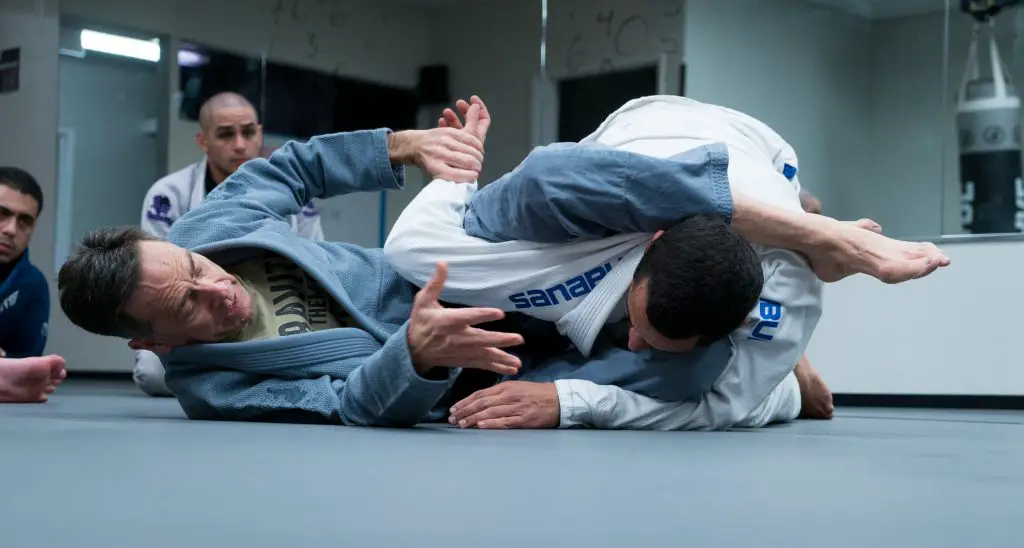
After an hour, I know exactly what he means. I’m a black belt in BJJ myself, and in the last sixty minutes I’ve been shown details about these positions that I’ve never seen before: details that will undoubtedly improve my efficiency and success rate on the mat. Not that I’m surprised by this: I know who I’m talking to—and I know that his statement that he had “really good instruction” is maybe the understatement of the century. I know that for almost twenty years Richard Bresler spent the better part of his waking life on the mat with Rorion, Rickson, Royce, Fábio Santos, and Grandmaster Hélio himself. I know that for almost twenty years he marinated in a stew of Jiu-Jitsu mastery that few of us can even imagine…
Or at least I know the bullet points. Now, our lesson finished, we’re about to venture into the weeds on Richard’s incredible story, and—excited as I was to soak up some BJJ knowledge at the feet of the master—I’m even more excited for phase two. As someone who got into Jiu-Jitsu well into the 2000s, I’ve always dreamed about what it must have been like to find Jiu-Jitsu “back in the day,” when it was still small and secret. Now I’m sitting with an undisputed authority on the subject: the first American student of Brazilian Jiu-Jitsu, and one of the first Americans to earn a black belt in the art. There’s so much I want to know. What was it like to learn from Masters Rorion, Rickson, Relson, Pedro Sauer, Fábio Santos, and more, back when they all trained and taught together under the Gracie Academy flag? What was it like to watch from ringside as Royce ran through his opponents at UFC 1? What was Grandmaster Hélio like? Or Master Rolls? What was the story with the seminar in Las Vegas in 1988? I’d watched the grainy footage of Richard Bresler and Rickson Gracie rolling in the garage of the Hermosa Beach house that Richard and Rorion shared—the garage that is usually referred to now as the first “Gracie Garage”—but I know nothing about how that footage came about… I have a million questions, and for the moment I don’t even know where to begin. Richard is less phased.
“The truth is, I was very lucky,” he says with another shrug. “My life changed the day I met Rorion. Before that, I was kind of a mess. I was doing a lot of drugs. I had no real direction in life. When I met Rorion and found Jiu-Jitsu, it was the first time in a long time that something really excited me. It was maybe the first thing in my life that I really got excited about. And so, because of that, Jiu-Jitsu became this catalyst for a lot of positive changes in my life. It really saved my life, in that way.”
If I’m being honest, this is not what I was expecting. I’ve met and trained with a handful of old-school BJJ black belts at this point. They’ve all been capable and knowledgeable… and, to a greater or lesser extent, they’ve all been hardasses. Again, I’m not talking about fighting prowess: I’d place Richard’s skills and knowledge up alongside any of theirs, and I know they’d agree with that assessment. What I’m talking about is vulnerability. I’d previously worried that trying to write the story of a BJJ black belt’s rise through the art’s early rough-and-tumble days of challenge matches and MMA would involve struggling through layers of self-aggrandizement and boasting, down to the human struggle hidden beneath. I can see already that my fears were unwarranted: this guy’s an open book, and the more he tells me the more I realize that this isn’t just the incredible story of BJJ’s humble beginnings in America—it’s also the story of a scared, timid kid’s journey out of his shell and into the world.
For his part, Richard has his own very clear ideas about this book, and what and why it needs to be. “People need to know this history,” he tells me emphatically, his kind face going stern. “Most people that get into Jiu-Jitsu now have no idea. They think it all started with the UFC. But the first UFC didn’t happen until 1993. My first lesson with Rorion was in 1979! Jiu-Jitsu was happening all through the ’80s. We were training all through the ’80s. Fights were happening all through the ’80s. Jiu-Jitsu was building all this time, and that’s the story people don’t know.”
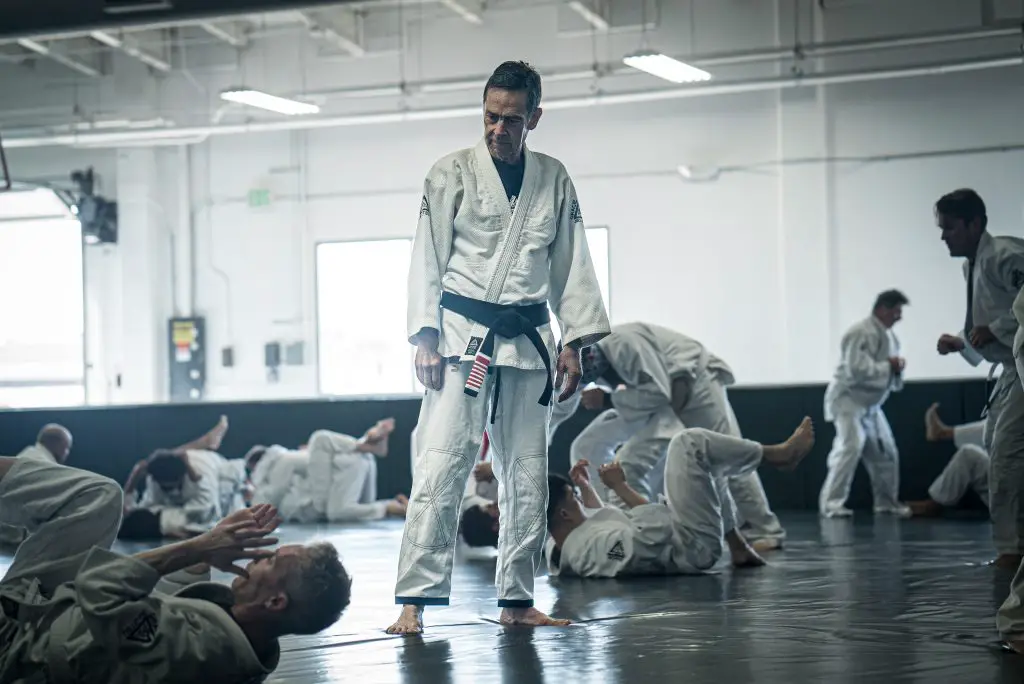
Playing devil’s advocate, I ask him why it matters. It’s one thing to write about the past, about the history of Jiu-Jitsu in America; it’s something else to write a book that feels vital to the moment, that feels engaged with Jiu-Jitsu now and the question of its future, that has something truly valuable to offer not only modern-day practitioners but practitioners in generations to come. Richard gives the question some thought before he answers.
“Jiu-Jitsu has changed,” he tells me. “The sportive aspect of Jiu-Jitsu has really grown, and because of that Jiu-Jitsu has moved away from its roots. And I think the thing is, like Rorion used to say to me: most people, when they walk into a Jiu-Jitsu school, they’re not walking in wondering if this school can teach them to be a world champion. The first thing most people are thinking about is self-defense. They want to learn to defend themselves. That’s their underlying insecurity. That’s why I got involved. I was insecure and I wanted to feel like I could defend myself. And the thing is, I think there are a lot more people like me out there than there are people like Andre Galvao. Guys like that—the guys who become big competitors—they’re great, but they’re fewer and farther between. And what you have now is schools that are only geared toward those competitors. They’re only teaching the sport and they’re not training the self-defense, and that concerns me.”
“What about the average guy or girl who just wants to learn to defend themselves, who trains at that school? They’re not a world champion. They’re not an athlete. They don’t have the physicality to do all of these sport Jiu-Jitsu moves. What are they learning? Because the thing about the Jiu-Jitsu I learned, the thing about Hélio Gracie’s Jiu-Jitsu, is it doesn’t rely on strength or speed or athleticism or power. I’m a small guy. I’m 5’10”, 145 pounds. The Jiu-Jitsu that I use—the Jiu-Jitsu that I learned and that I teach—isn’t about power. It’s the pure technique, the way that doesn’t rely on speed or power. And I’m concerned that that’s being lost, and that part of the reason it’s being lost is because people don’t know the history. They don’t know what Jiu-Jitsu is really about. I hear people say, Yeah, Jiu-Jitsu’s a good sport. I tell them, No! It’s a sport second. It’s self-defense first.”
“Old school guys like Fábio Santos and Pedro Sauer and some of the other guys still emphasize the self-defense, but a lot of the offshoots don’t teach it and don’t know it. Instead they’re doing all of these different moves where, if they did it in an actual fight, they’d get punched in the face. So many of the sport Jiu-Jitsu positions, you’re so vulnerable to strikes. You look at the guys who have trained sport Jiu-Jitsu and who have gone into the UFC, and very, very few have succeeded. So when I see schools that don’t train the self-defense it concerns me, because I think it does a disservice to those students and to Jiu-Jitsu in general. Jiu-Jitsu for the average person, the smaller, weaker person, the non-athlete, that was Hélio Gracie’s thing. And I realize now that I’m one of the few people who’s still teaching the way I’m teaching, and the fact is that I won’t be around forever. All of us from that time, we’re all getting older. And I don’t want that Jiu-Jitsu to go away. It’s something that I want to give, while I’m here to give it.”
He’s been looking around the room while he talks, searching for the words, but now his steady gaze settles on me. “That’s why I want to do this book,” he says, with a wry smile, “and that’s why it needs to be really f***ing good.”
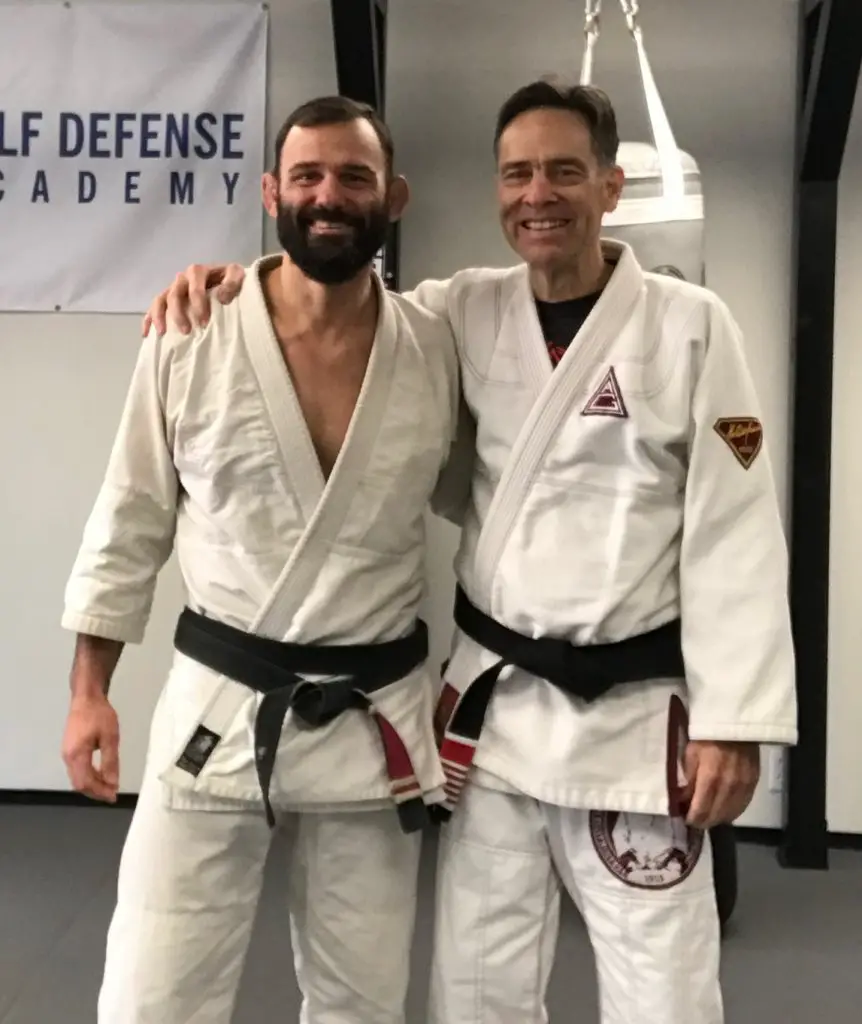
If the response so far is any indication, we may have just pulled it off. A year and a half after its initial release, the book—titled Worth Defending: How Gracie Jiu-Jitsu Saved My Life—has topped bestseller (Amazon, Mixed Martial Arts Books) and new release (Amazon, Mixed Martial Arts Book, Martial Arts Biographies; BookAuthority.com, “7 Best New Jiu-Jitsu eBooks To Read In 2022,” “Best New Martial Arts Books”) lists, garnered high marks from readers (as of this writing the book holds a just-shy-of-perfect 4.9 out of 5 stars on Amazon, with nearly 300 reviews), and been called “a gift to the Jiu-Jitsu community” and “a must-read for any martial arts practitioner.” It and its subject/author have been featured on the Grappling Central, Chewjitsu, BJJ Fanatics, and Jiu-Jitsu Dummies podcasts, as well as the Gracie Breakdown YouTube channel. Not bad, considering the concerns that Richard and I discussed: that most Jiu-Jitsu schools today focus on the sport of Jiu-Jitsu, and assume that’s where their students’ interests lie. Turns out that maybe they’ve got it wrong after all: that maybe there’s an ocean of interest in and curiosity about the old-school Jiu-Jitsu whose surface has only been scratched. Turns out that that may be where Jiu-Jitsu’s future really lies.
Great as all of this has been, as far as I’m concerned, it’s nowhere near where it needs to be. BJJ and MMA continue to grow, enriching the lives of millions of fans and practitioners, each of them (unknowingly) enjoying the fruits of Richard’s substantial efforts to support Jiu-Jitsu in its uncertain infancy. The BJJ world is still just waking up to the fact that we’re all very lucky to have Richard Bresler, and that we should all thank our lucky stars every day we’re on the mats for him and all he has done for the art we all enjoy and which benefits so many of us so greatly. As Rener Gracie himself told me, “No one did more to help my dad—and my family’s art—establish a foothold in the U.S. than Richard Bresler. Anyone training Jiu-Jitsu in America today owes Richard Bresler their thanks.” Or, as Rener’s late mother Suzanne told me, “My family, and all those enjoying Gracie Jiu-Jitsu today in America and around the world, owe Richard a debt of gratitude.” It has always been my hope that with this book Richard will receive some modicum of the appreciation—and the acclaim—that he deserves. I hope you’ll check out the book, and in so doing become a part of that.
And if you’re still on the fence and need one more reason to read Richard’s incredible story: remember the waterbed I mentioned way back at the beginning of this article? Turns out that story didn’t fit in the space allotted, and my editor cut it for length. I guess if you want to learn what that’s all about… you’ll just have to read the book.
Worth Defending: How Gracie Jiu-Jitsu Saved My Life, Richard Bresler’s bestselling memoir of his over 40 years’ involvement with the Gracie family and Gracie Jiu-Jitsu, is available in paperback, eBook, and audiobook formats through Amazon, Audible, and iTunes. Visit www.WorthDefendingBook.com for more information, reviews, blurbs, and to order. Richard Bresler is available for private lessons, group classes, and seminars in and around Southern California. Contact him through either Facebook, Instagram, or directly via email at RBJJ86@gmail.com.


